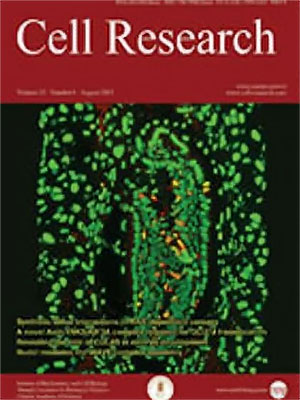
Volume 14, No 5, Oct 2004
ISSN: 1001-0602
EISSN: 1748-7838 2018
impact factor 17.848*
(Clarivate Analytics, 2019)
Volume 14 Issue 5, October 2004: 389-399
ORIGINAL ARTICLES
Overexpression of the tissue inhibitor of metalloproteinase-3 during Xenopus embryogenesis affects head and axial tissue formation
Bryce Pickard, Sashko Damjanovski*
Department of Biology, University of Western Ontario, London, Ontario, Canada
Correspondence: Sashko Damjanovski(sdamjano@uwo.ca)
Tissue inhibitors of metalloproteinases (TIMPs) modulate extracellular matrix remodeling during embryonic development and disease. TIMP-3 expression was examined during Xenopus laevis embryogenesis: TIMP-3 transcripts detected in the maternal pool of RNA increased at the mid-blastula transition, decreased dramatically during gastrulation and increased again during neurulation and axis elongation. Interestingly, the decrease during gastrulation was not seen in LiCl treated (dorsalized) embryos. Whole mount in situ hybridization of TIMP-3 using DIG-labeled RNA probes demonstrated that the transcripts were present in all dorsal tissues during embryogenesis, but were prominent only in head structures starting at stage 35. Overexpression of TIMP-3 through transgenesis and RNA injections led to developmental abnormalities and death. Both overexpression strategies resulted in post-gastrulation perturbation including those to neural and head structures, as well as truncated axes. However, RNA injections resulted in more severe early defects such as failure of neural tube closure, and transgenesis caused truncated axes and head abnormalities. No transgenic embryo expressing TIMP-3 survived past stage 40.
FULL TEXT | PDF
Browse 1933


